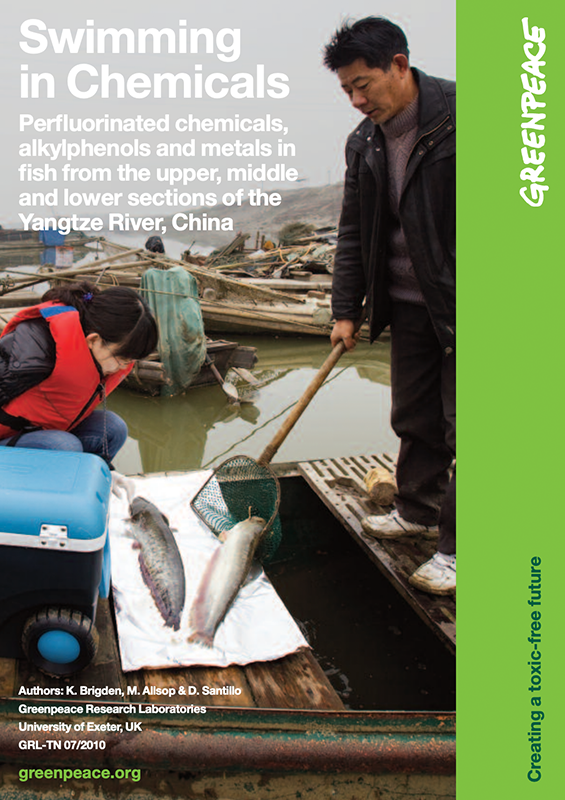Perfluorinated chemicals, alkylphenols and metals in fish from the upper, middle and lower sections of the Yangtze River, China
For many years there has been growing concern over the manufacture and use of hazardous chemicals, and over the presence of many of these chemicals in the environment as a result of their release from industrial sources or from products that the chemicals have been used to manufacture.
Summary
Some hazardous chemicals are highly persistent once released into the environment. They do not break down readily and can therefore remain as contaminants, sometimes far from where they were initially released, with the potential to cause harm over long periods of time. As a result of their continued production and use, many such chemicals have become widespread environmental contaminants. Furthermore, many are bioaccumulative, able to accumulate in the bodies of animals living in contaminated environments, and often pass along food chains.
Largely as a result of legislation, the manufacture and use of some of the most hazardous chemicals has greatly reduced in many countries and regions in recent years. However, the opposite trend is being seen in China for certain hazardous chemicals, where their manufacture and/or use has either continued largely unchanged or, in some instances, actually increased considerably in the last decade. For instance, while the manufacture and use of alkylphenols and perfluorinated chemicals has been greatly reduced in some other countries, there has been considerable recent growth in the amounts manufactured and used within China.
In addition to man-made organic chemicals, the use and release of metals can result in their presence in the environment at levels far exceeding natural background concentrations. This is of particular concern for metals that are highly toxic and able to bioaccumulate, with cadmium, lead and mercury being three such metals to have recently attracted attention. Within China, the production and use of lead and cadmium has increased in recent years, and China has become one of the largest producers and users of these metals, if not the largest. China also contributes a considerable fraction of total global atmospheric emissions of mercury, largely from metal smelting and the burning of coal.
This study was carried out to determine the concentrations of alkylphenols, perfluorinated chemicals and cadmium, lead and mercury in the tissues of wild fish collected from the Yangtze River in China, from January to March 2010. Information on these chemicals is given in the introduction of the main report, including information concerning their manufacture and use, their environmental distribution in fish and other organisms and the current status of regulation in some countries and regions.

